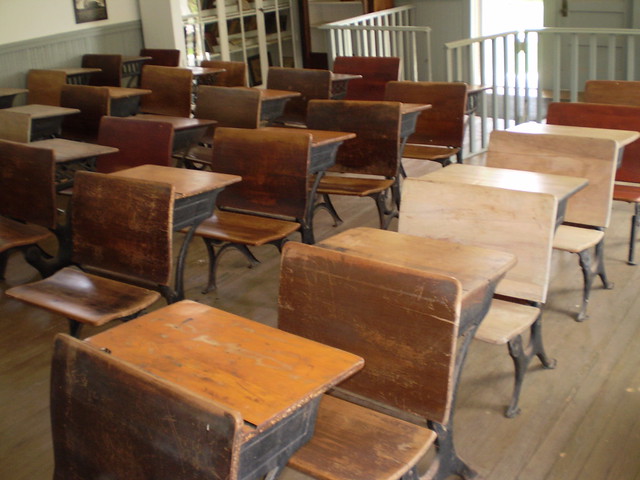Often times in education we fall into the habit, or trap, of negative dialogue. It's easy to focus on what's not working well, what needs to change, or what is wrong with the 'system' or 'school board'. I hear it often, and too have fallen into that trap at times. However, contrary to what we believe, it really doesn't help improve anything. What we end up doing is just driving ourselves mad, and allow the negative conversation to continue. Don't get me wrong, it's important to vent and have the support of peers to do so; but what if we vent more often about the great stuff happening in our classroom, school, board, or education in general? Wouldn't that do more to improve education as a whole? Wouldn't we be able to learn more? Improve our professional practice? Provide students with a more enjoyable education experience? I think so.
That's why we need more of #10goodthings; more sharing of what's going so well in our own practice. Thanks to Ve Anusic, a good friend and colleague of mine, who challenged me to reflect & share some of the good things happening in my little world over the past year; and thus contribute to the positive dialogue in education!
#10GoodThings
1. The continuous learning I am experiencing in my new role as an Instructional Technology Resource Teacher. Hesitant & overwhelmed at first, I am really loving this new role in supporting, learning, and working with many different schools & colleagues.
2. A couple of days this past semester I was able to work alongside
George Couros - someone I consider a rockstar in education.
3. Continuously revisiting my own professional practice around assessment, and doing away with traditional evaluation practices; and loving every bit of it. Gotta thank
@AssessmentGeek for that one!
4. Hit 100,000 views on a Youtube
video I posted for my students. It may not be that interesting, but I don't, nor have ever, taught that many students. It made me realize the vast connections we are able to make now through new media and technology.
5. I continuously learn about 'new' tools (ie.
Kahoot,
Thinglink,
Canva, etc.) for use in the classroom and share them with others. For one I love learning about a new tool, but more importantly I love when a colleague uses it in their classroom and comes back to tell me how much their students enjoyed using it, and the greater learning experience it has given them.
6. I have encouraged my parents to begin using Instagram, Pinterest and Wordpress, to follow their own passions, and connect with the world.
7. I miss the classroom - this is a good thing. It reminds me of how much I love teaching.
8. Twitter has been good since I began using it. But find myself liking it more and more, mainly because of a very awesome PLN that has formed through the
#peel21st hashtag. I find myself constantly learning from many amazing educators.
9. I am excited by many new opportunities to learn from others, as well as share my learning. Really excited to try out making a podcast with
@jimmyblackwood!
And last but not least...
10. Blogging. I wish I could do it more, but when I do, I find it very beneficial. Like this very post, it allows me to truly reflect on what I am thinking or doing.
A little note:
I began this post wondering if I could even write about 10 positive things. I am now apologizing to those experiences, relationships, and past events that I failed to mention here. It's amazing what happens when you begin reflecting - you begin to realize just how much you have done, and the people who have contributed to it! There are a lot more than 10 'things' and maybe I'll write another list soon.









